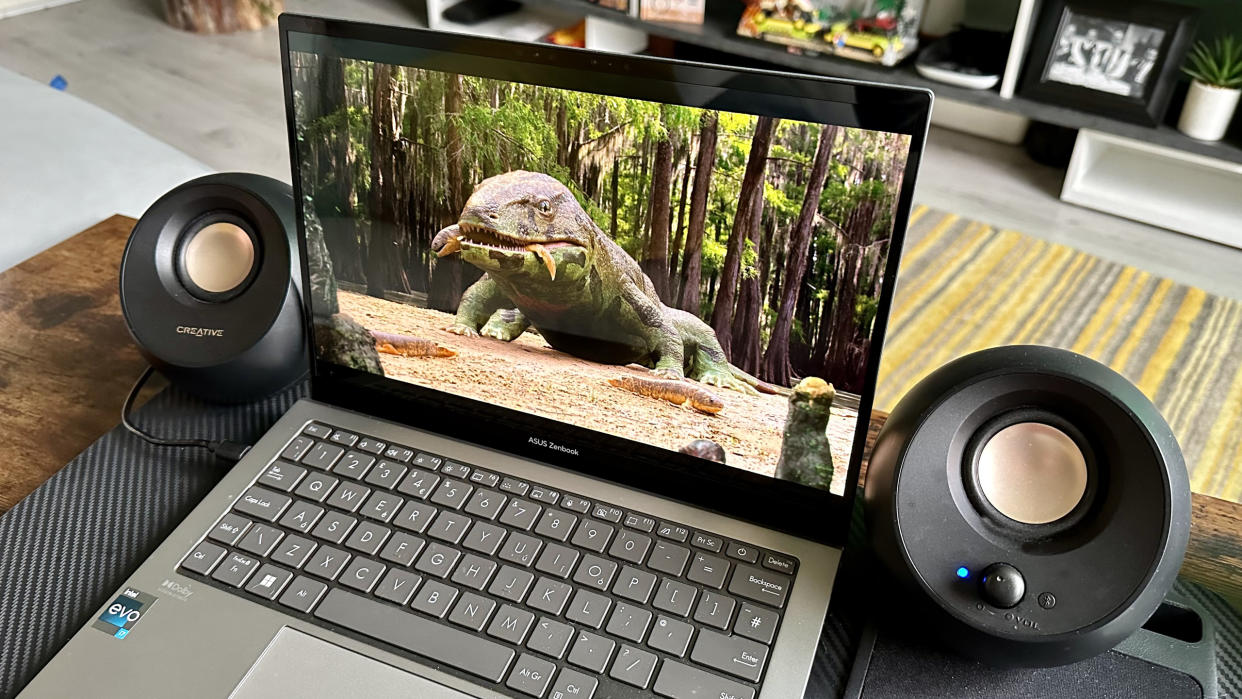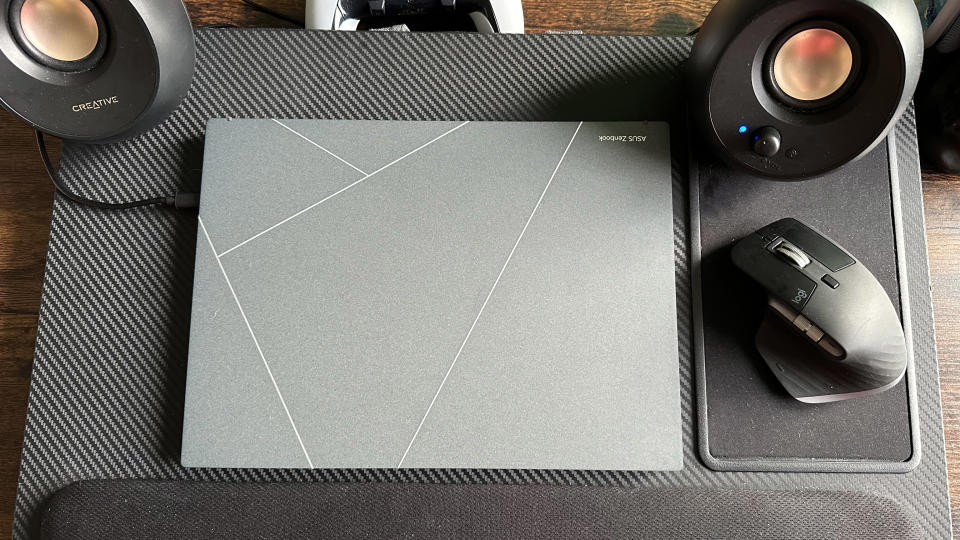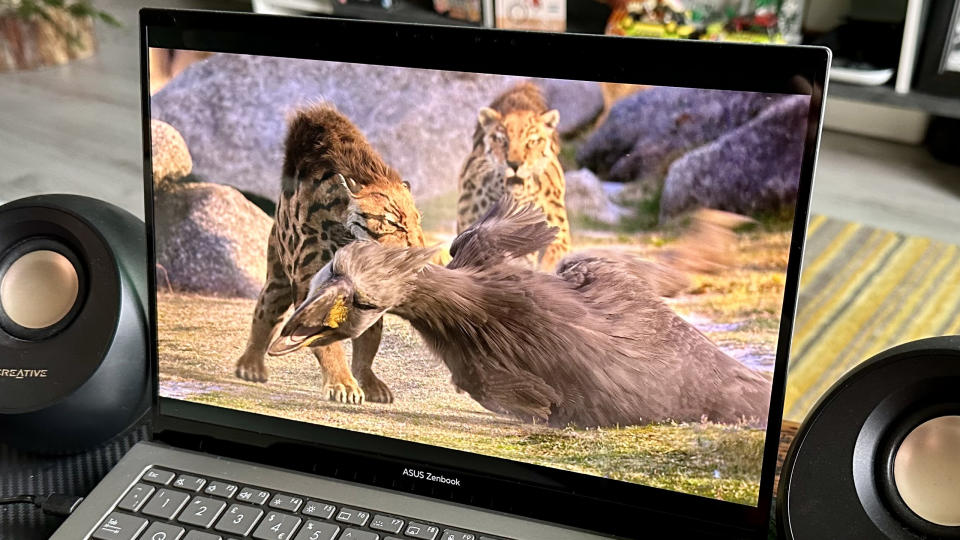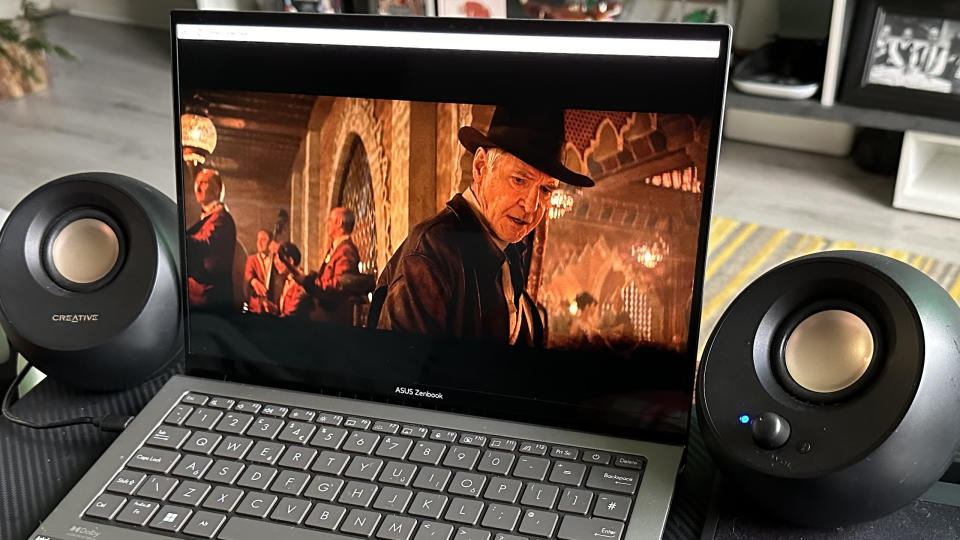My favorite laptop of the year has such an amazing OLED screen, I’ve stopped using my iPad Pro

I came to love my favorite non-gaming laptop of the year thanks to a $20/£15 tray I bought from an obscure U.K. home-focused store. Weird, I know, but having a neat little setup (that comes with a pleasingly responsive, built-in mouse pad) you can casually plonk down on your coffee table has freed me from the confines of my stuffy home office when I’m off the clock.
That’s been a total game-changer, and it's helped me love the Asus Zenbook S 13 OLED all the more as a solid daily driver. To my obsessive pupils, this is the cutest little laptop I’ve ever set eyes upon. C’mon, isn’t it basically “Bambi adorable”?

Though we gave it a positive rating — if not quite a glowing write-up — in our Asus Zenbook S 13 OLED review, I still think it’s a terrific laptop. Although that personal take heavily depends on what you prioritize from a portable PC.
As someone who owns a desktop with an Nvidia GeForce RTX 4090 and AMD’s sensational Ryzen 7 7800X3D processor, it’s hardly a shocker I’ve not been blown away by laptop gaming performance this year. Granted, my rig has the best GPU/gaming CPU combo you can buy, yet I’ve reviewed super-expensive laptops over the last few months that haven’t delivered enough performance to justify their eye-watering price tags.
The only one I’d say was truly worth the (still huge) investment? The phenomenal Asus ROG Zephyrus G14. And even then, the particular config of this incredible gaming laptop I reviewed was packing an RTX 4090 Laptop GPU.
A large part of the G14’s appeal is its brilliant mini-LED screen, but the Zenbook S 13 OLED has a significantly better one, in my opinion.
That’s just my two cents, of course. Though the fact the model I’ve been living with for two months costs a third of Asus’ beast deserves credit in an age when every penny counts.

Mini-LED has made real strides thanks to the increasing number of dimming zones that’s helped the display tech reach near OLED-level blacks. But c’mon: OLED is OLED. If we’re talking sports analogies, mini-LED is the Scottie Pippin next to the beardiest of all the GOATs in Michael Jordan/OLED.
When my computing compadre Alex Wawro reviewed the Zenbook S 13 OLED, he rightly brought up its middling performance when it comes to daily computing tasks. That, and battery life was borderline bad.
Yet that sensational 13.3-inch OLED screen is something else. Native resolution is a pin sharp 2.8k (or 2,880 x 1,800, if you love precise pixel counts), meaning the quality of this display largely covers up whatever deficiencies this Zenbook is hiding under its hood.
I’ll admit I’ve been using Asus’ gorgeous laptop almost exclusively plugged into the wall, so the battery life factor hasn’t been a big deal for me — outside of my skyrocketing electricity bills.
Screen as a whistle

This isn’t a machine I’d use for gaming either, thanks to its undercooked specs. Still, it’s a laptop I’m only too happy to watch ALL the Netflix/DisneyPlus/Amazon Prime Video content on. And as such, it’s why I’ve barely touched my (still excellent) iPad Pro 2021 since Asus sent me its beautiful laptop.
When we initially reviewed this portable PC, it covered 106.1% of the sRGB color gamut, which is extremely respectable. In terms of our more demanding DCI-P3 color tests, the results were less impressive, but it still beat the numbers of what either the Dell XPS 13 or MacBook Air M2 produced. The Zenbook S 13 OLED edged both of these laptops out by less than a percent (Asus’ 13-incher hit a respectable but not world-beating 75.25%). For context on those stats, the closer to 100% the better.
The highest compliment I can pay the Zenbook S 13 OLED? In the time I’ve been living with it, I’ve watched way less of my 77-inch LG G3 OLED TV"
Here’s the highest compliment I can pay the Zenbook S 13 OLED. In the time I’ve been living with it, I’ve watched way less of my 77-inch LG G3 OLED, which many AV experts would tell you is the best TV in the world. The fact my peerless televison has been getting less love from my eyeballs of late should provide further context of why my iPad Pro is growing more dusty by the day.
Martin Scorsese is my second favorite filmmaker of all time — the person who made Jurassic Park happens to hold the number one spot in my heart. So that’s a pretty easy guess to make in terms of who my most beloved director is.
The reason I bring up the magnificent Marty — and while we’re on the matter, the seemingly ageless Tom Cruise — is that both cinematic icons have strong opinions based around the fact you should be watching movies on gigantic cinema screens.
The best day of my life was June 11, 1993, when I finally got to view a certain dino flick after a solid year of hype. I say this only because as much as I’m an advocate for the cinematic experience, today’s OLED tech is so good (especially in the Asus Zenbook S 13’s case), I’d give serious consideration to watching my most beloved film on a small laptop screen with perfect black levels over increasingly aging cinema screens that can no longer quite cut the mustard when it comes to impeccable picture quality.
Oh, and the fact the Zenbook S weighs just 2.2lbs while delivering such sensational image quality? I may detest the phrase, yet in this case, you deserve all the flowers you can carry, Asus.
And if you're in the market for a slightly more powerful laptop from the company, the gorgeous Asus Zenbook 14 OLED (model number UX3405) has recently gone on the market. It also looks to fix our biggest issues with the Zenbook S 13, with Asus claiming its latest portable PC boasts over 15 hours of battery life thanks to new AI features.
